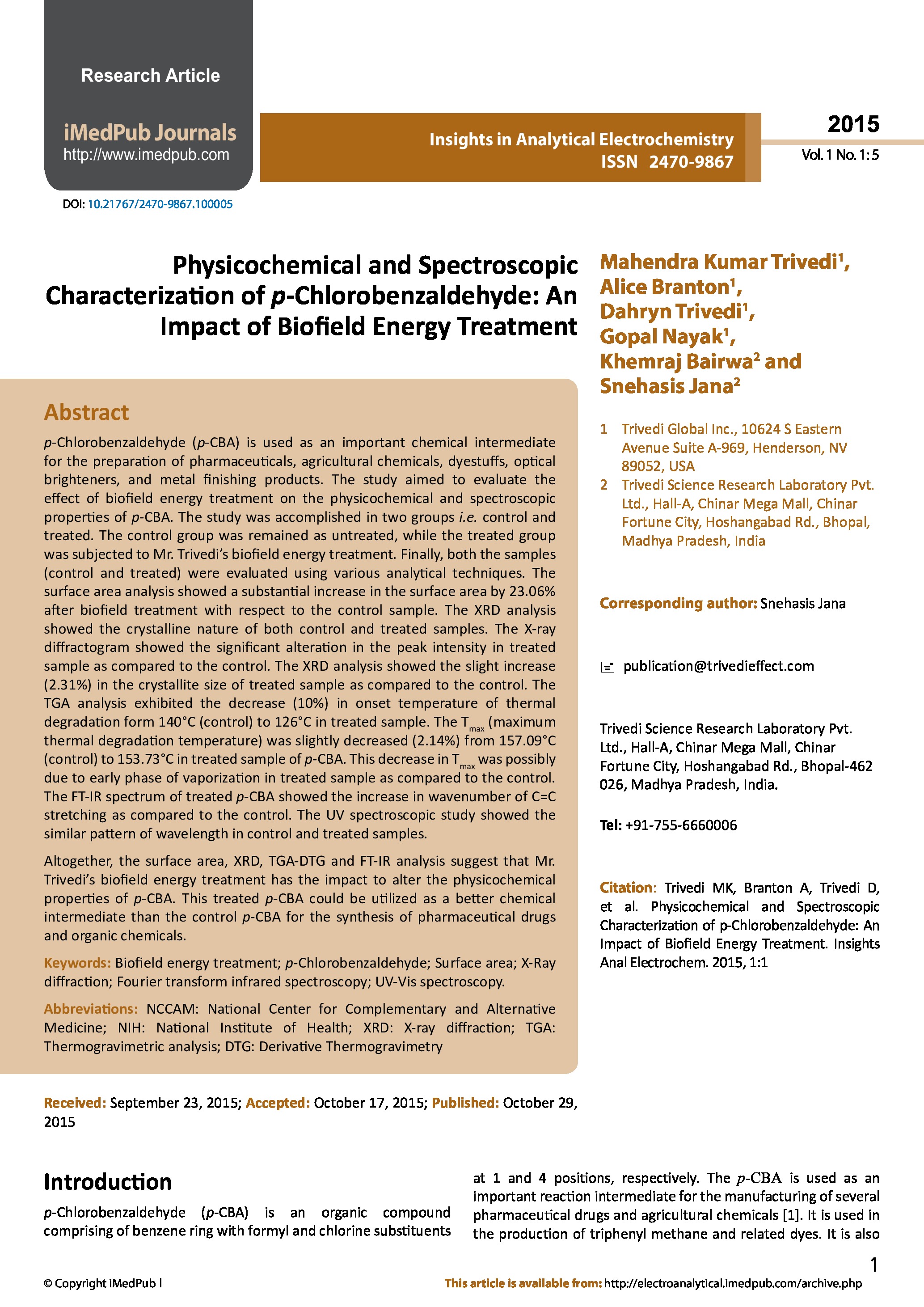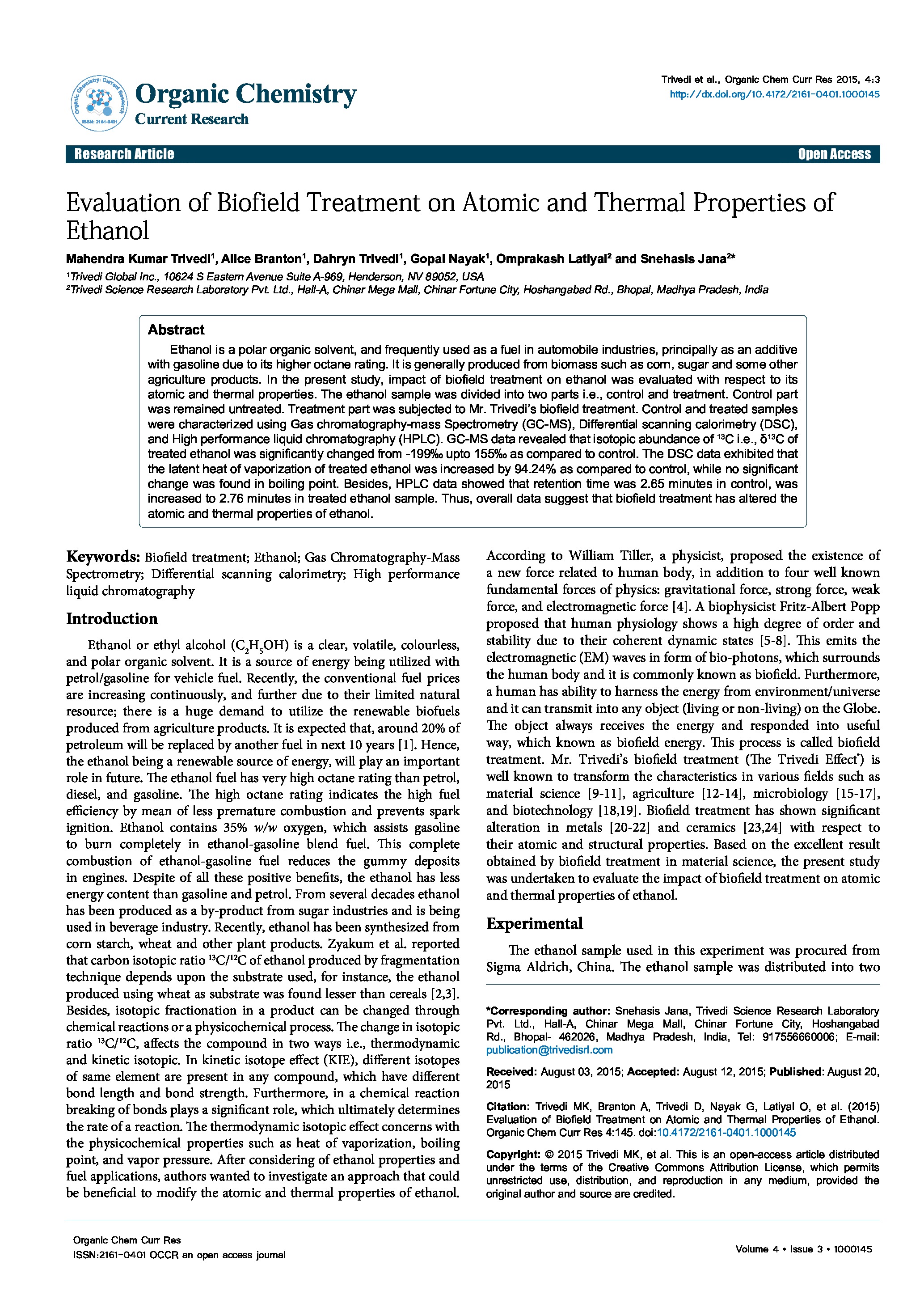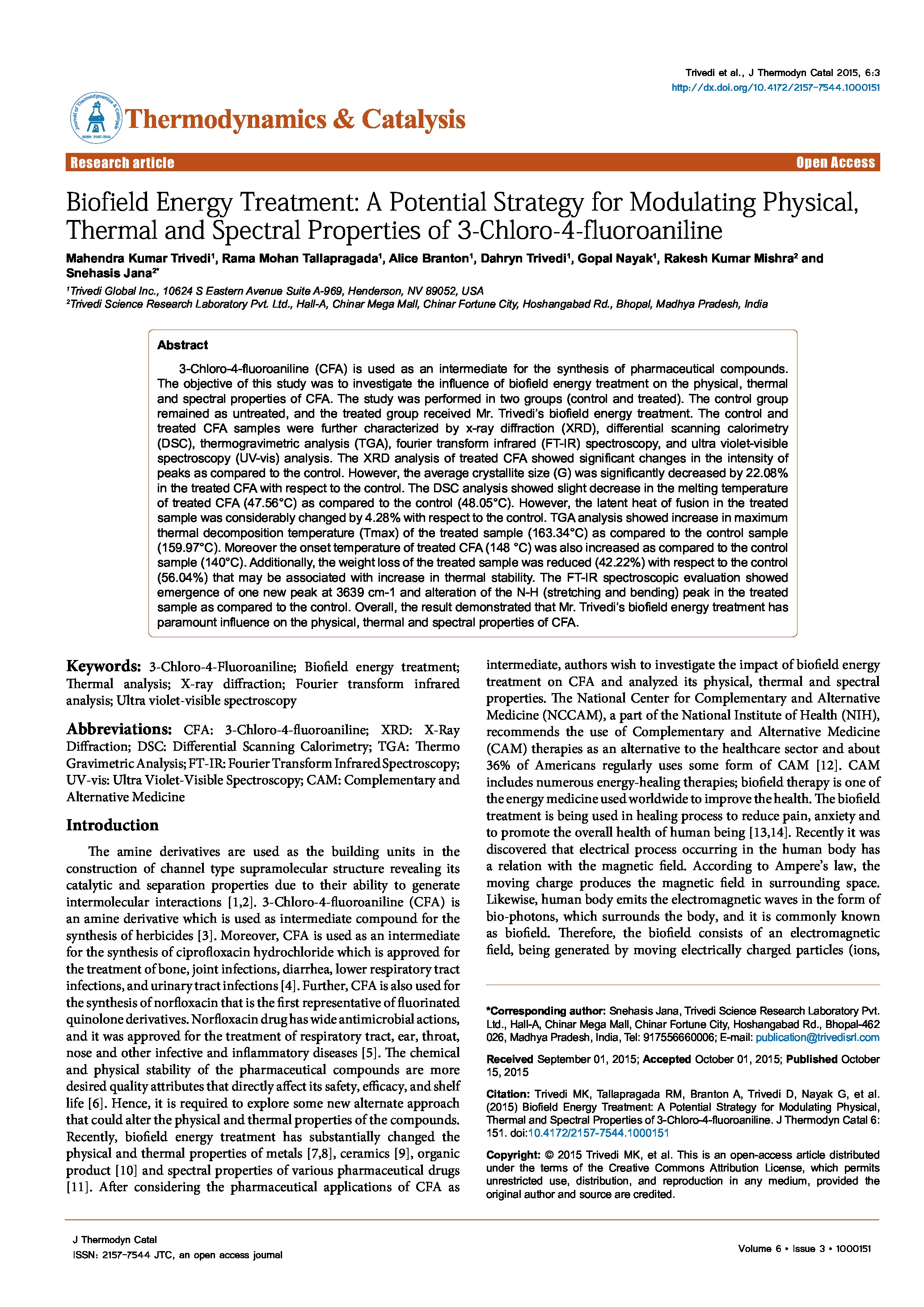Date of upload:
25.11.2016
Co-author:
Mahendra Kumar Trivedi, Alice Branton, Gopal Nayak, Harish Shettigar, Mayank Gangwar, Snehasis Jana
Abstract:
In recent years, prevalence of multidrug resistance (MDR) in Pseudomonas aeruginosa (P. aeruginosa) has been noticed with high morbidity and mortality. Aim of the present study was to determine the impact of Mr. Trivedi’s biofield treatment on MDR clinical lab isolates (LS) of P. aeruginosa. Five MDR clinical lab isolates (LS 22, LS 23, LS 38, LS 47, and LS 58) of P. aeruginosa were taken and divided into two groups i.e. control and biofield treated. Control and treated group were analyzed for antimicrobial susceptibility pattern, minimum inhibitory concentration (MIC), biochemical study and biotype number using MicroScan Walk-Away® system. The analysis was done on day 10 after biofield treatment as compared with control group. Antimicrobial sensitivity assay showed 60% alteration in sensitivity of tested antimicrobials in MDR isolates of P. aeruginosa after biofield treatment. MIC results showed an alteration in 42.85% tested antimicrobials out of twenty eight after biofield treatment in five isolates of MDR P. aeruginosa. Biochemical study showed a 48.48% change in tested biochemical reactions out of thirty three as compared to control. A significant change in biotype numbers was reported in three clinical lab isolates of MDR P. aeruginosa out of five, after biofield treatment as compared to respective control. On the basis of changed biotype number (7302 0052) in biofield treated LS 23, new organism was identified as Citrobacter freundii as compared to control (0206 3336). A very rare biotype number (7400 4263) was found in biofield treated LS 38, as compared to control (0206 3736). Study results suggest that biofield treatment on lab isolates of MDR P. aeruginosa has significant effect on the antimicrobial sensitivity, MIC values, biochemical reactions and biotype number. Biofield treatment might prevent the emergence of absolute resistance pattern of useful antimicrobials against MDR isolates of P. aeruginosa.




